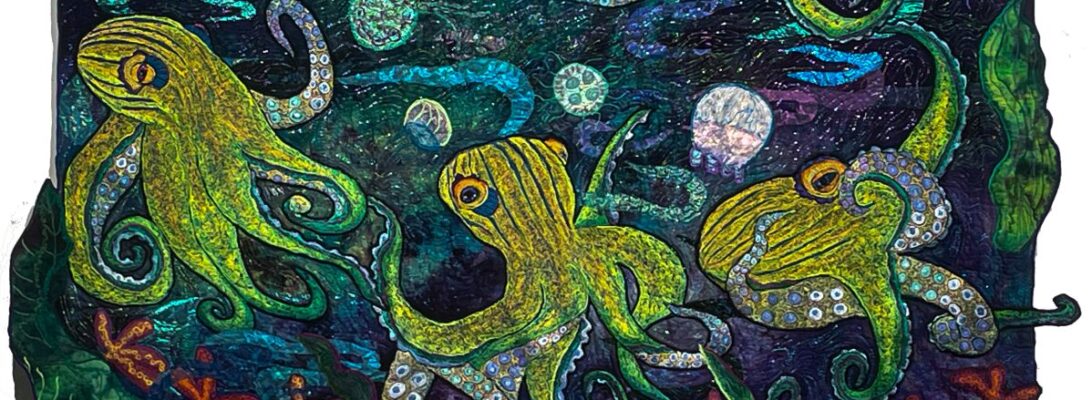
There’s nothing like new threads. You know I love thread. It’s the most important component in my art. I love my fabric but I am nuts over thread.
One of the things that is different for me now that I am no longer on the circuit, is that I don’t have to make threads that are commercially saleable. I’m not constrained by that so I can explore threads that can’t be reproduced in regular quantities for students. I’ve used # 8 pearl cotton because it came in dye hanks. I could easily dye it for myself but also for also for students who were in my class and needed access to the threads I worked with.

Now that I just in my studio working my own art, I have the freedom to work with things that can’t easily be put up for sale. This last dye load, I dyed up a load of thread that I’m so excited by. I’m looking forward to trying out my #10 pearl cotton.

You can’t dye thread wound in a ball. You can hank it off with a swift, but there’s no way to make even skeins without counting accurately. Those of you who know me know how likely that is.

The smaller ball is #8 pearl. The larger on is #10 pearl. The larger the number the smaller the thread. The #10 still needs to be worked in the bobbin case, but it will give a finer grain stitching. I’ve started the first row on this frog in the #10 so you can see how it stitches up. I am so excited!

Sometimes a change in materials changes our work immensely. Sometimes it makes a little change. Sometimes it changes nothing. There’s no way to know until you work with things. But the possibilities make me giddy.








